A house built by your own hands is the pride of every owner. In such a house, everything is done for a convenient and comfortable life. In order to be warm and comfortable in any weather, you should carefully consider all stages of construction, especially the laying of the floor. A wooden house should be warm in frosty winters and cool in hot summers.
Even the most professional and solid floor laying work leaves small gaps between the boards, which inevitably leads to heat loss, and also disrupts the air circulation under the joists, which is necessary in a wooden structure. Up to 30% of the heat is emitted through such slots, which will significantly lower the room temperature and increase the energy consumption for heating.
There are several options for eliminating such defects. You can use additional coverage, thereby quickly and inexpensively solving this problem. Simple installation of linoleum or carpet will not solve the problem. The disadvantages of this step are fragility and relatively low efficiency. A more radical and decisive approach is to independently engage in floor insulation using modern thermal insulation materials. To choose a method of insulation, one should take into account the design features of the house, climatic conditions and some temperature parameters.
Insulation of the floor between wooden joists
An uncomplicated and fairly effective method that can be carried out on your own without the help of specialists. Well suited for both private and multi-family residential buildings.
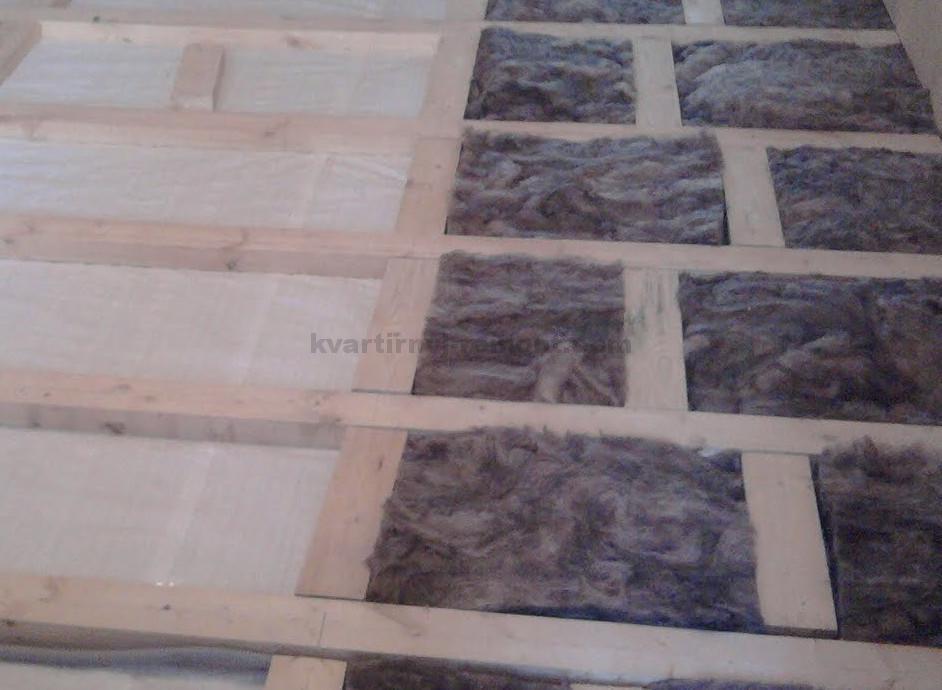
Selection of material and calculation of its required thickness
Before you buy a material for thermal insulation, carefully study the existing assortment. Of great importance here will be what it is made of, standard sizes, properties, brand-manufacturer. Keep in mind that the material in the mats will be more dense and resilient than in rolls. Consider the thermal conductivity of the material, its specific gravity, dimensional stability and vapor permeability. Many manufacturers place this information on their product packaging.
We'll have to apply several formulas. Calculation of the required thickness of thermal insulation = RxA. The values for the R coefficient (total thermal resistance of the building structure) can be found in the tables to the SNiP appendix "Thermal protection of buildings". Building codes are a set of basic regulatory requirements and regulations. There you can spy on all the values of interest. For example, the value of the thermal conductivity coefficient is A. The collection of all parameters should be carried out taking into account the requirements of SNiP. It is necessary to calculate the parameters of the permissible floor load. In the tables, you will also find values for calculating the so-called temporary loads (furniture, equipment, people and animals). The total height of the entire structure is calculated. The humidity and temperature inside the house are taken into account. You can also use an online calculator for the calculation.
The main stages of floor insulation work
- Installation of a structure with wooden joists on a leveled floor surface
- Installation of waterproofing and rough flooring from boards or shields
- Laying insulation between the logs (filling the joints with polyurethane foam or sealant)
- Laying material that provides reliable vapor barrier
- Manufacturing of wood flooring, on which the final topcoat can then be mounted.
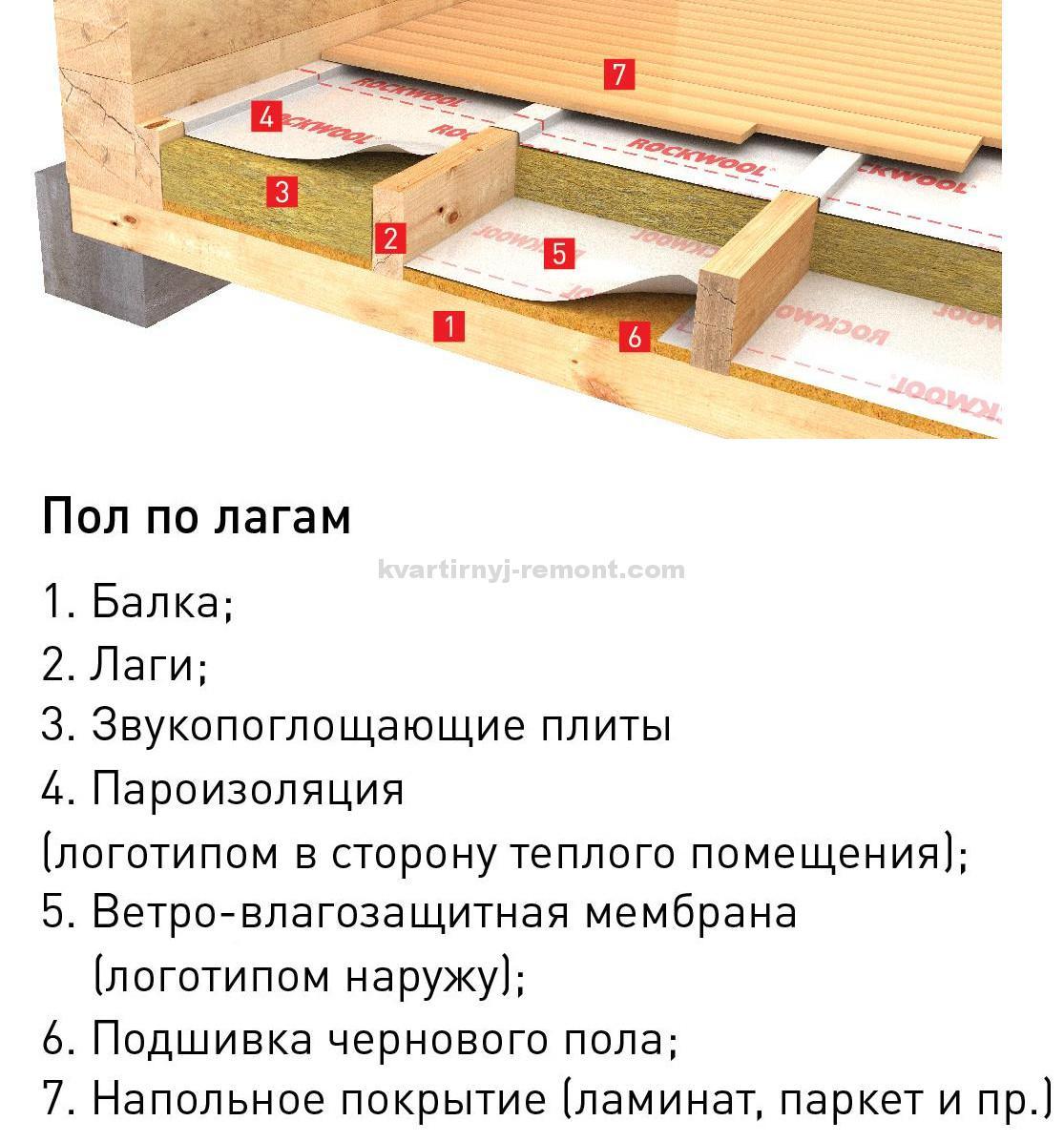
A layer of insulation is “sewn up” between the layers of waterproofing and a vapor barrier.
The vapor barrier will protect the thermal insulation from the formation of condensation and steam from the inside of the room. The material for the vapor barrier is a film that is additionally fixed with a special metal tape. There are the following types of film vapor barrier: polyethylene and polypropylene.
When used for wooden floors, the film material requires an air gap.
Polyethylene film vapor barrier
- Perforated film (can be used as a waterproofing agent)
- Non-perforated film (for vapor barrier in wooden houses, not tear resistant)
- With an aluminum layer (for rooms with high humidity)
- Reinforced (a reinforced layer is placed between two layers of polyethylene)
Polypropylene vapor barrier
- Non-reinforced film (cheap but not practical material)
- Reinforced film (viscose and cellulose - additional reinforced reinforced layer). During installation, it is laid down with a reinforced layer.
The parobayer is installed on the logs using any available fasteners.
Features of floor insulation without lag
In the absence of a lag, an additional screed is poured onto the floor surface. It will level the surface and remove all possible irregularities.
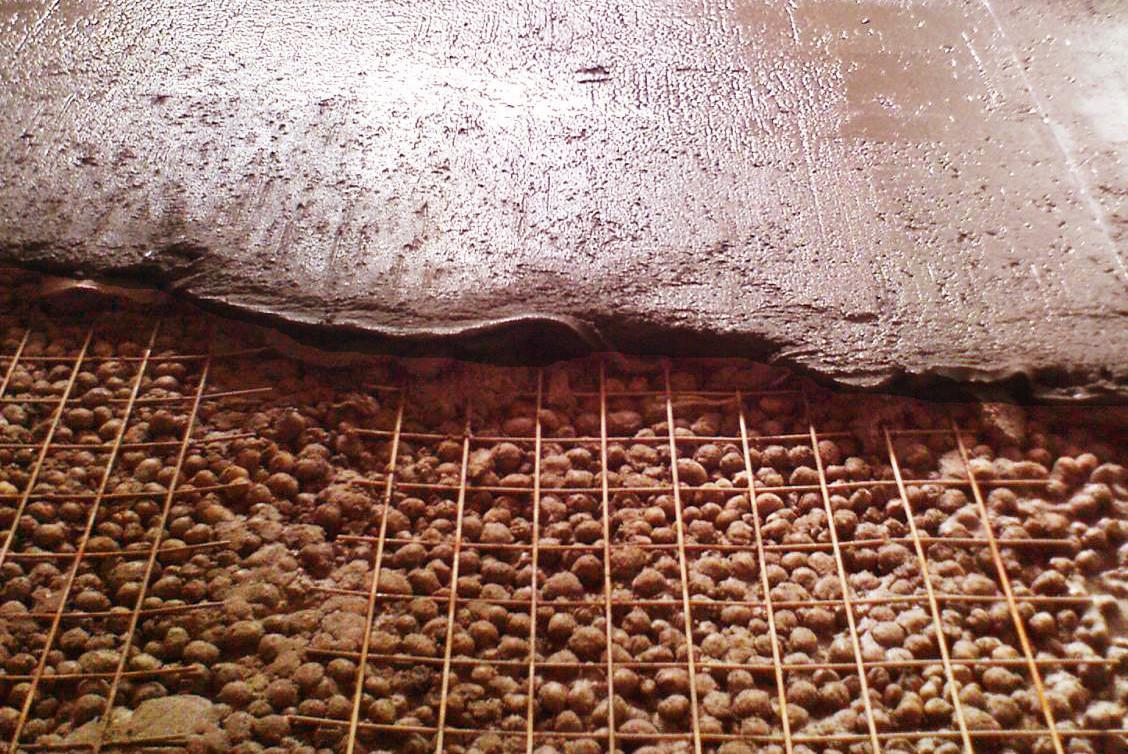
- We are laying waterproofing. Choosing affordable and economical products. We focus on reliability and ease of use. Traditional roofing felt and roofing felt, bitumen-containing roll materials are suitable.
- Fill in a layer of medium fraction expanded clay. Thermal insulation can be carried out using expanded perlite or vermiculite. A thin layer of such materials will also create good sound insulation. Vermeculite can also have a leaf form of release. Agloporite is not a very economical option. Environmentally friendly material is sawdust. They are hygroscopic, superior to expanded clay in terms of thermal insulation quality, non-flammable and prevent decay. Treated with a special compound with an antiseptic, even at high humidity, such a filler will remain dry. Industrial slag is the cheapest thermal insulation material. There are certain requirements for the content of ash and coal in waste, for their subsequent use as a heat insulator.
- Above - an additional layer of roll waterproofing. Using the slats, we set the height of the insulation layer.
In a small room, it will be enough to arrange the slats only around the perimeter of the room.
Ways to insulate the floor in a wooden house with a basement
Quite a laborious process, it is most convenient to disassemble in stages.
- Crate pry bar
Bars of lathing 5x5 mm., Attached to the timber of the base of the floor. - Laying the sub-planks
Small gaps are allowed. The sub-planks should not completely cover the ceiling joists. - Waterproofing laying
- Insulation sheets
- Vapor barrier
- Finish layer of final finish
This installation is suitable for houses with a basement or subfloor, where there are no subzero temperatures.
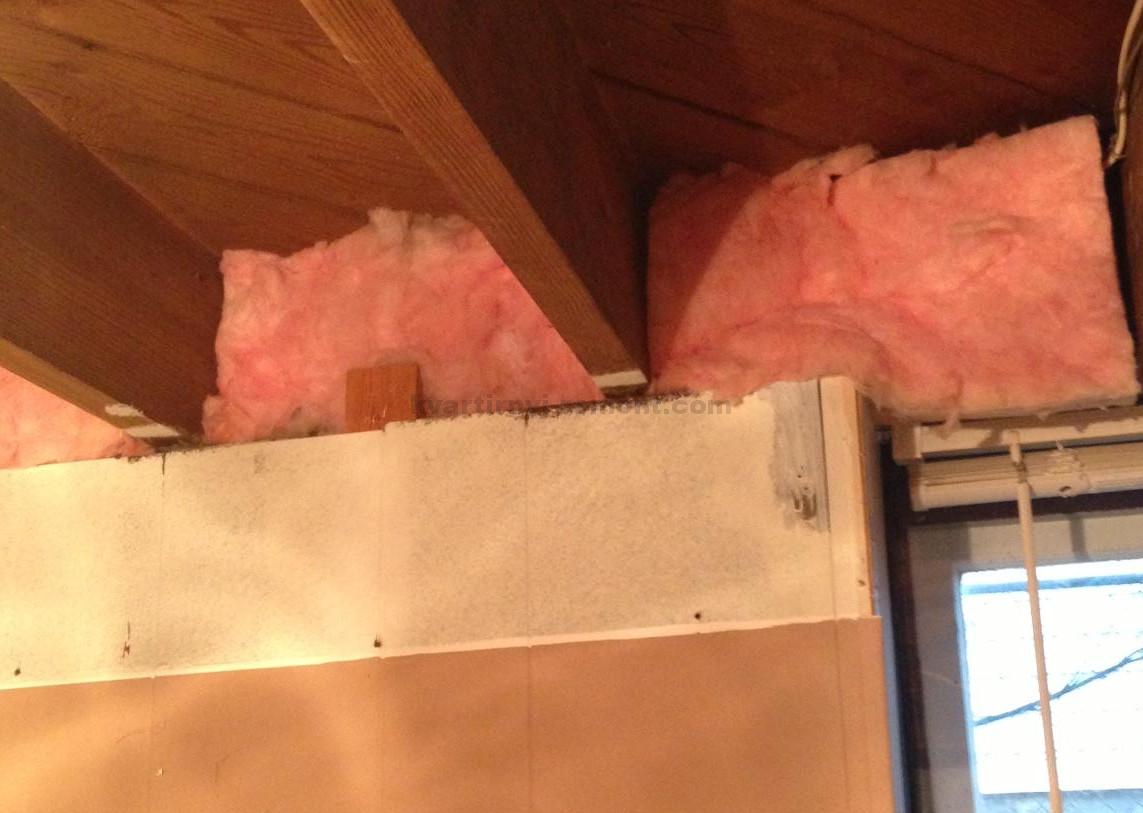
Another scheme is the most popular:
- Draft layer
- Loose insulation or sand
- Cardboard
- Air gap (about 3 cm.)
- Finishing
Wooden logs can be fixed on posts (brick, concrete), installed directly on the foundation of the house, or embedded in the wooden basement of the house. Also directly onto the load-bearing beams.
We insulate a wooden floor in a house without a basement
The feature of the foundation will be important here. The method of installing the lag and the subsequent installation of the floor will depend on it. You can insulate the soil itself, or you can put the insulation in the interlag space.
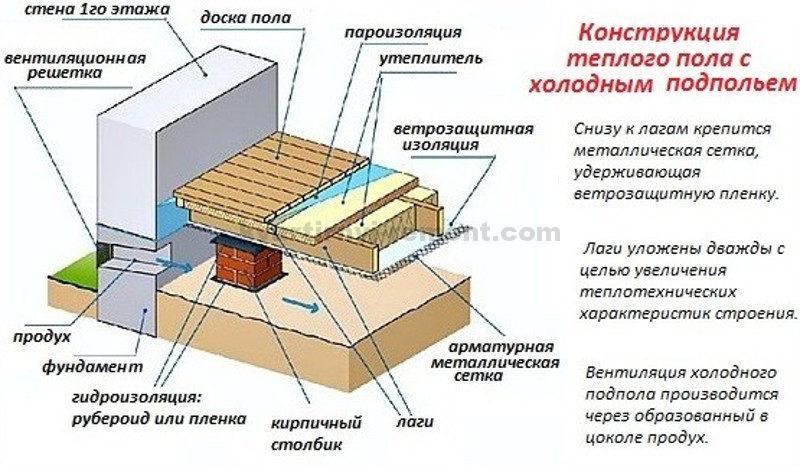
In houses with a small base, where the height above the ground is low, you can lay the logs directly on the reinforced ground. The advantage of such a floor is that it will not put additional stress on the base of the house. Reinforcement is carried out with the help of a concrete screed, on which, subsequently, a lag structure is installed. The screed is best poured in several layers. Insulation, vapor barrier is laid on the waterproofing, in the space between the logs, and you can start installing the plank floor. As a heat insulator, you can use rolled mineral wool or expanded clay.
In the version with a large basement distance, the joists are laid in such a way that there is an opportunity for air circulation. This creates a ventilated space that prevents dampness in the house.
A variety of modern insulation
Fiber insulation
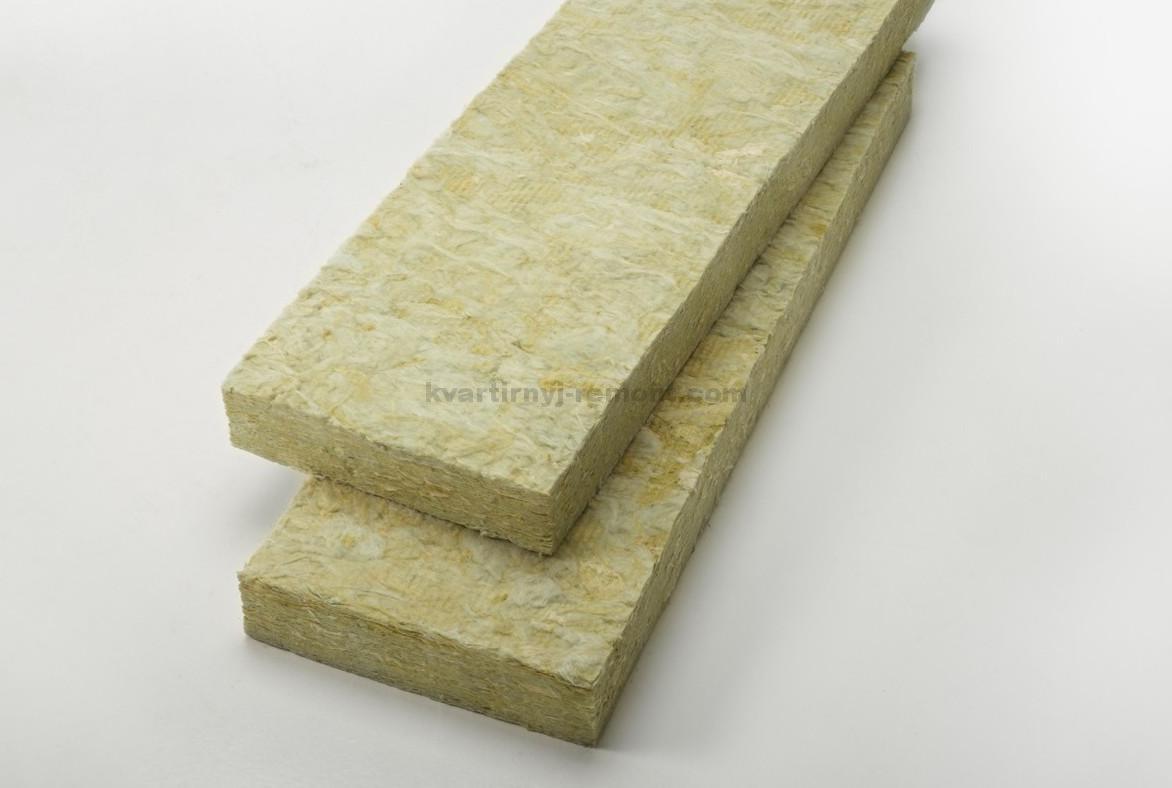
Fiberglass and mineral wool are excellent heat insulators, good sound insulators. Laying the fiber between the laths is very tight. The spacing should be made smaller than the width of the roll of material. The disadvantages of the material include low vapor permeability and low mechanical strength. Also, glass wool fibers are subject to shrinkage, and it is unsafe to work with it. Mineral wool is safe, does not shrink, but outperforms fiberglass. Mineral wool is laid with the markings upwards, that is, with the denser side. In this case, vapor barrier is not required.
Organic insulation
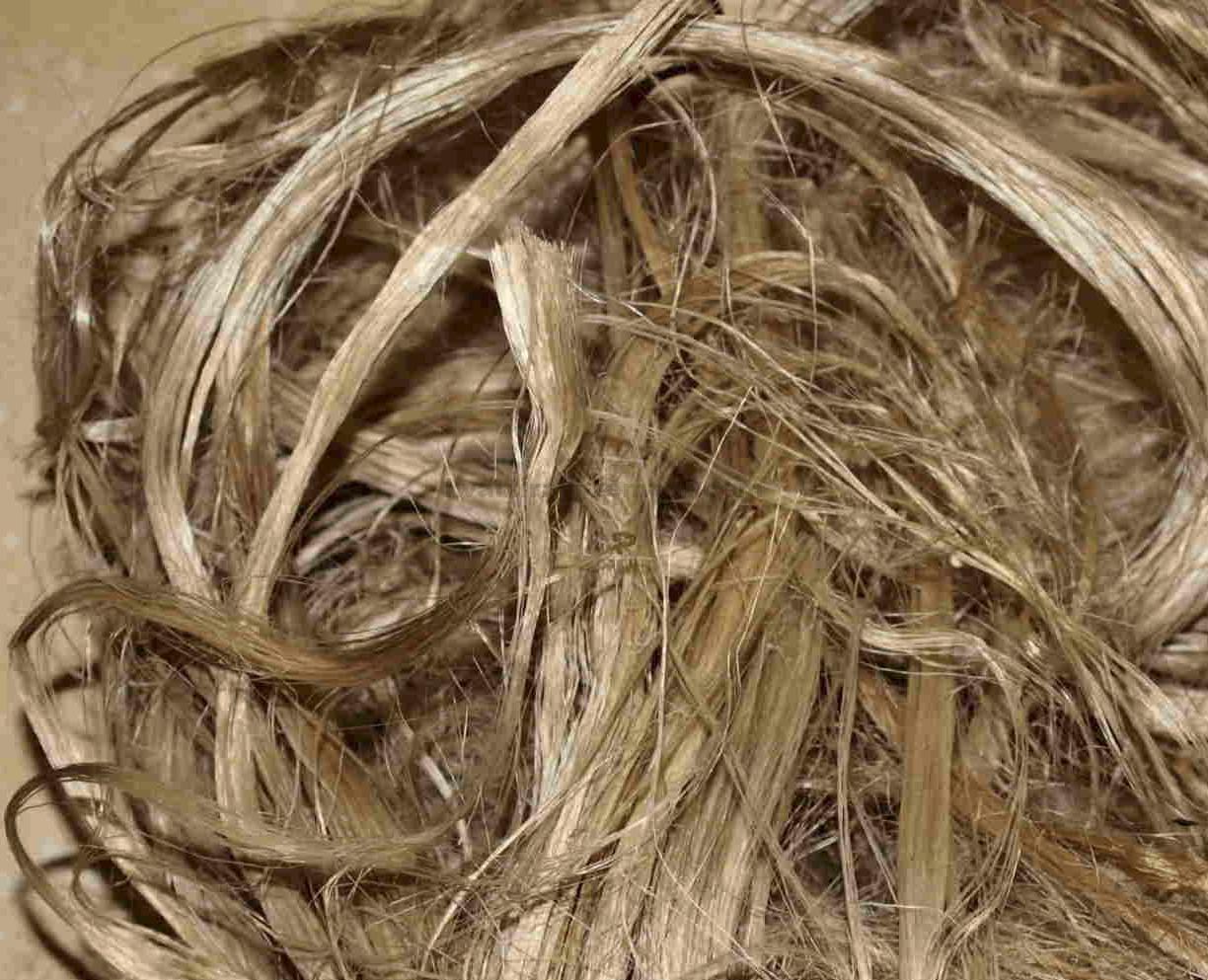
Linen or jute fiber, very similar in properties to mineral wool. The fibers are easy to work with and safe. They are afraid of moisture getting to the surface, as the decay process may begin.
Polyurethane foam
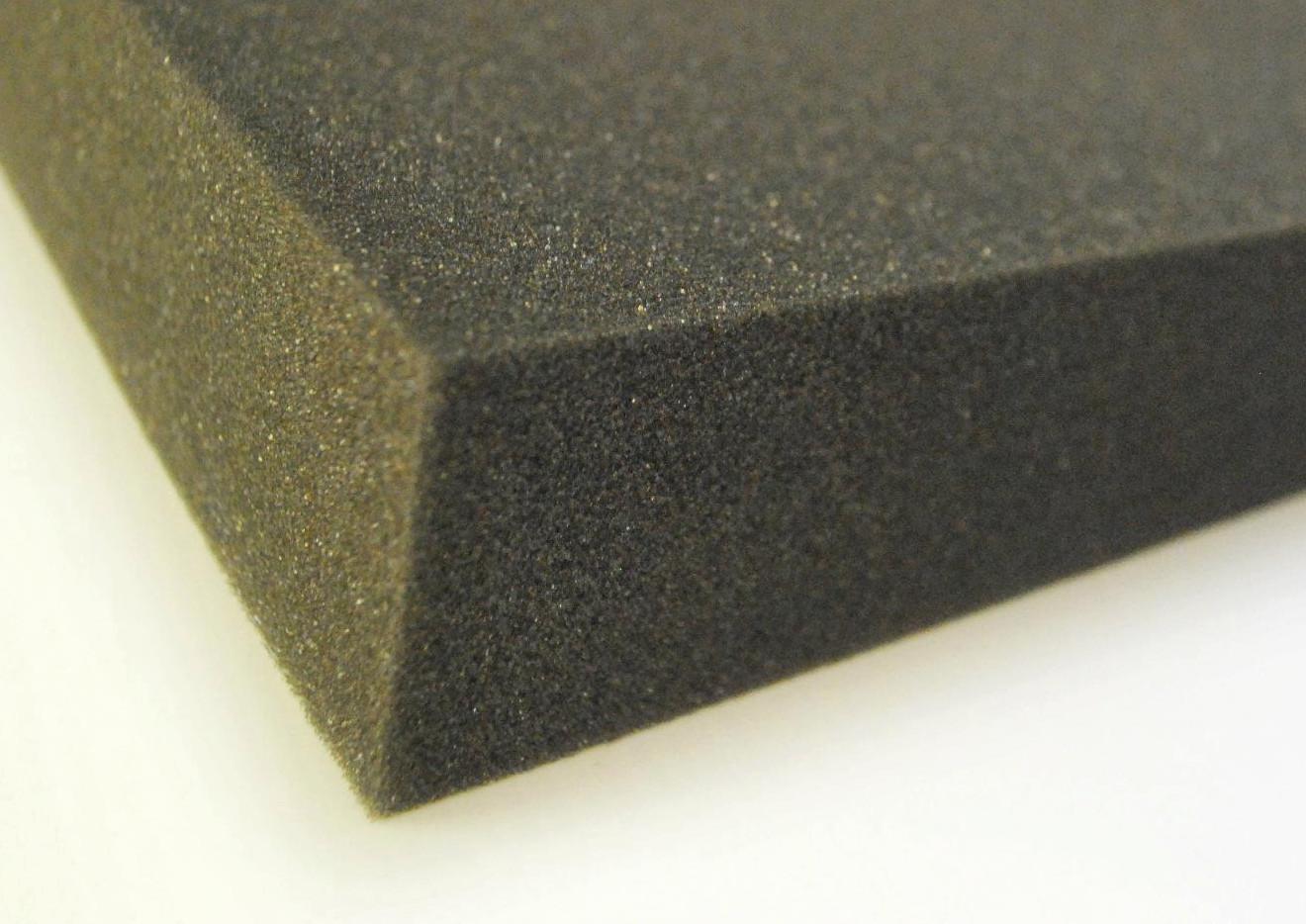
Can be used as a final finish. It is applied by spraying. Quite high price, adequate to quality indicators. Such a coating will have low thermal conductivity, low water absorption, and environmental friendliness. Stability in its structure and shape, durability. Quality material must be dry and free from harmful volatile impurities.
With foam

Polyfoam is a dense material that reflects infrared rays well. Environmentally friendly and inexpensive. The only drawback is the instability to environmental influences. In closed rooms, the foam does not wear out and does not lose its qualities.
Bulk insulation
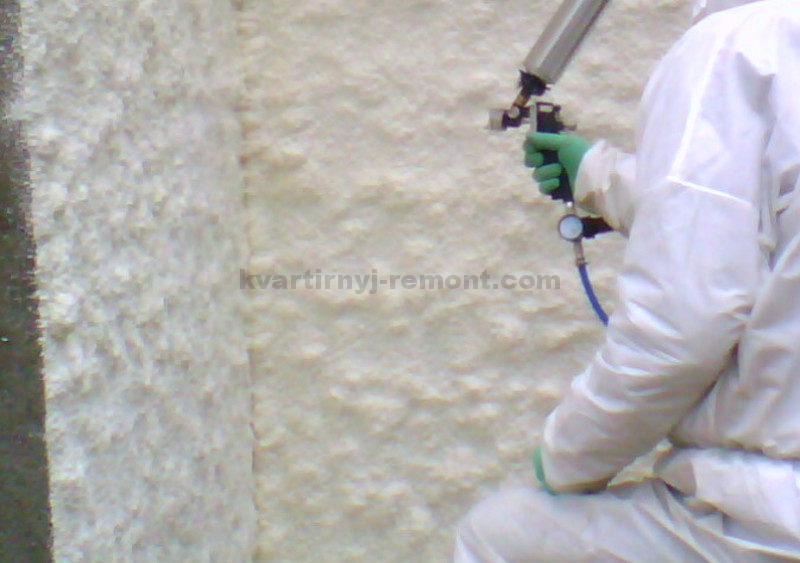
Easy to install. On the bulk insulation, you can make a flooring finish. Not very economical in terms of cost.
Foam concrete and aerated concrete, granuloconcrete

Remains after construction can be used as insulation. These types are highly resistant to heat retention. Granuloben is affordable and has high qualities of a heat insulator. Its composition is sand, cement and pieces of foam.
Newest heaters
The range of heat-insulating materials is expanding more and more.
Traditional materials give way to the latest advances. Physical and technical characteristics are becoming more and more perfect. The names of species, brands and types are enormous.
Penofol

Foil reflective foam layer and low thickness, gives a result that is many times superior to conventional materials. Layed in one layer, it does an excellent job not only with the heat preservation function, but also with waterproofing. It can serve as a vapor barrier. Long service life, ideal for use in a wooden house.
The novelty Penofol-2000 has protection on both sides in the form of aluminum foil. The efficiency of the material is much higher than that of its predecessors.
Izolon
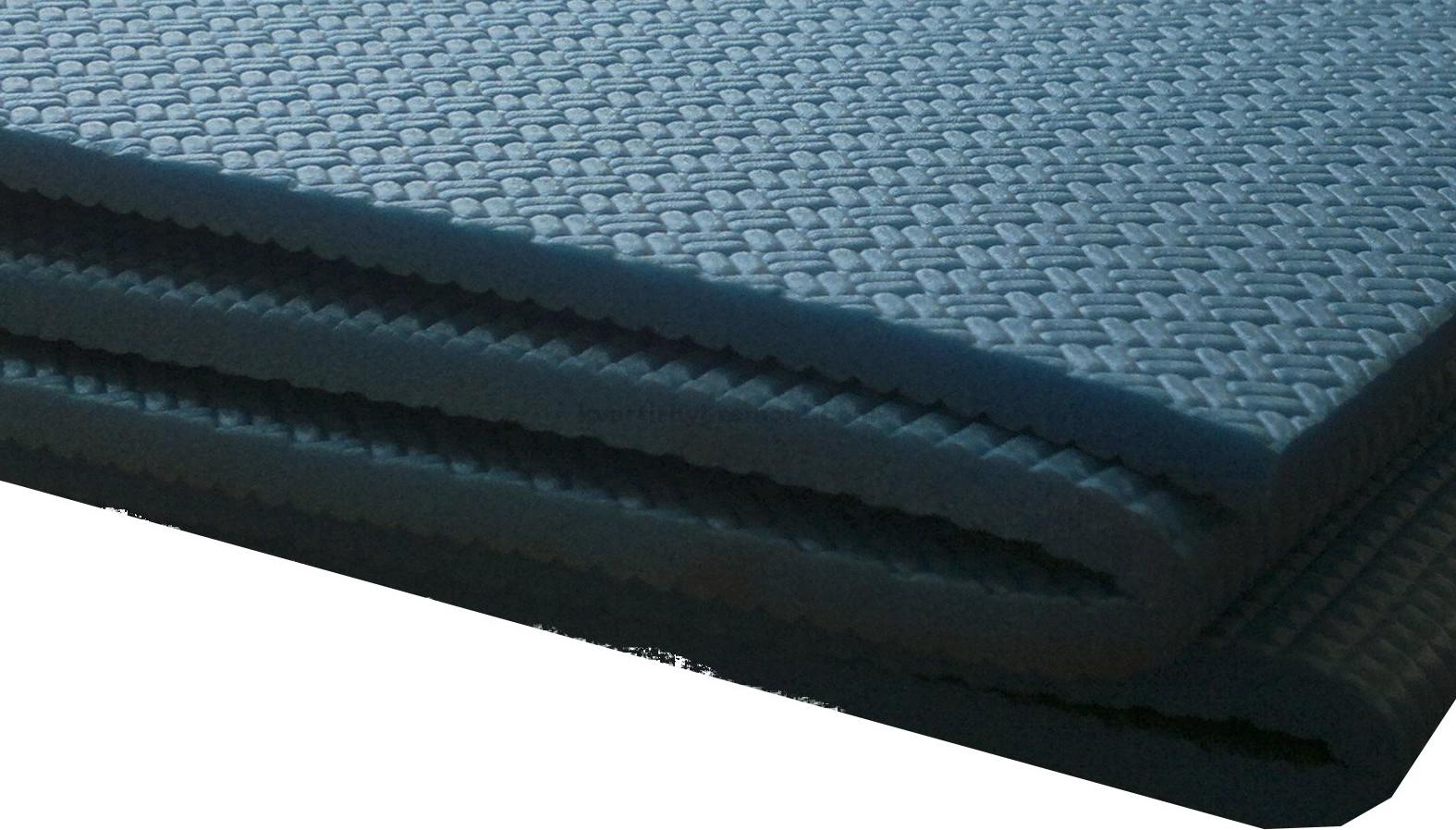
The use of materials of a new generation with a uniform cellular structure will give the entire structure even greater strength and elasticity. Foamed material with a cellular structure. A thin layer of such material is an unsurpassed heat insulator. Economical in price, elementary in its use and operation. Combines with any other materials, great for use in wooden houses. Eco-friendly.
For insulation with a thin layer, you can use extruded polystyrene foam, which also has a foamed cellular structure, it will be a good choice. Plates made of expanded polystyrene - penoplex, will also be a good heat insulator. The material is laid on a leveled base of the floor, attached to it with plastic anchors. After installing such a heater, you should immediately proceed with the installation of the main floor covering.
Materials and methods for finishing the floor
There is a large selection of different floor coverings for the final, final finish of the floor. , laminate, parquet board and solid wood boards. In cases where it is necessary to emphasize the beauty of a wooden floor, it is advisable to use a varnish. Also pay attention to the oiling and waxing method. Such processing will protect the tree from the appearance of fungus, mold, insects and will give an excellent appearance. When choosing a finishing material, you should pay attention to such material characteristics as:
- Wear resistance
- Good acoustic properties
- Ease and practicality in cleaning
- Compliance with the style and interior of the house
The warmth and comfort of your home depend on the correct choice of materials and the method of insulation, as well as on the quality of the work carried out.
Usually these articles are also viewed.



